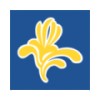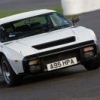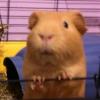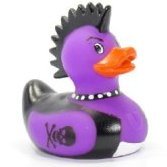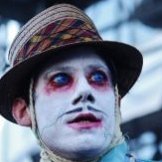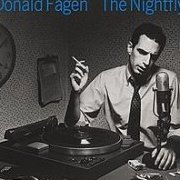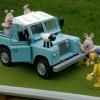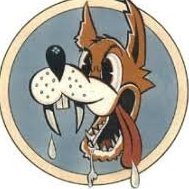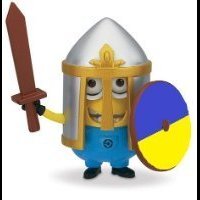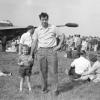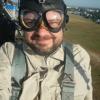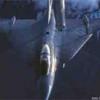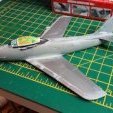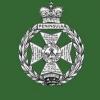Search the Community
Showing results for tags 'Sabre'.
-
With the upcoming F-86 Group Build due later this year, I thought I’d take the opportunity to correct a number of erroneous misconceptions related to the 413th Fighter Day Group. But first a bit of history. On 11 November 1954, HQ Ninth Air Force General Order No.62 reactivated the 413th Fighter Day Group (FDG) at George AFB in California with subordinate units the 1st, 21st and 34th Fighter Day Squadrons (FDS). On the same date, command of the Group was assigned to Col George ‘Ravin’ Laven, Jr with squadron commanders Maj Arnold ‘Moon’ Mullins (1st FDS), Maj Stephen L Bettinger (21st FDS) and Maj Richard D Creighton (34th FDS) also assigned. Thus the Group could boast two Korean War aces (Bettinger and Creighton) while Mullins had kills in both WW2 and Korea; he would be posted out to Far East Air Command on 11 April 1955 and his place taken by Maj Herbert A Pederson. Colonel Laven (whose family nickname was “Butz”) had been a P-38 ace in WW2, registering combat claims with the 54th Fighter Squadron in Alaska plus a final one on 26 April 1945 with the 8th FS in the Philippines. His combat aircraft carried the name “Itsy-Bitsy” and when he moved to the 14th FG post-war (flying F-84B Thunderjets in Maine), his personal aircraft was named “Itsy-Bitsy III”, even though by that time it was at least the fourth aircraft to carry that name. When the 413th FG reformed in 1954, it was Laven who was largely responsible for applying flamboyant paint schemes to the aircraft (of which more later). Nominally, the individual squadron colours were red for 1st FDS, yellow for the 21st FDS and green for the 34th FDS. The 413th FDG had been planned as an F-84F unit, but orders were revised to mandate the F-86H as the combat type though equipment and personnel scales still reflected ‘Thunderstreak’ during the early days. Allied to a lack of hangarage, offices and accommodation this period was one of challenge and frustration. It was therefore something of a blessing that only on 31 December 1954 were orders finally received to pick up ten F-86Hs from North American’s Columbus plant. In the interim, six F-86Fs (s/n 51-13261, 51-13263, 51-13268, 51-13322, 51-13326 plus one other) had been borrowed from the neighbouring 479th FDG in order to transition pilots onto F-86-type aircraft as well as to maintain currency. One hundred and eighteen hours were logged on these loaned aircraft up to the end of December and a further 140 hours in the Base Flight T-33 but the Sabres were a mixed bag of tired airframes and others which spent most of their time grounded due to lack of parts. But an unexpected bonus was the arrival of an F-86H-1 (s/n 52-2038) from Clovis AFB at the end of the year for filming “The McConnell Story” and this aircraft was retained on loan, allowing seven pilots to check out in the type before its return. Ground training for pilots had begun at George AFB on 1 November (more than a week prior to the Group’s official activation), though this concentrated on the F-86F as a precursor to accepting loaned aircraft from the 479th FDG. Forty-nine crews attended ground training while another 62 were able to rotate through the F-86H Mobile Training Detachment set up at Clovis AFB in New Mexico. Maintenance crews also passed through the MTD at Clovis AFB while others attended the J73 engine course at Amarillo AFB in Texas and M39 cannon familiarization hosted at Lowry AFB in Colorado. But it was a steep learning curve: though a number of Sabre-qualified pilots had transferred from the 21st FBW prior to its movement overseas, many more of the aircrews had completed their training on F-84E and F-84F fighter-bombers and the majority had no swept-wing experience at all. Expansion into more permanent facilities was made possible by movement of the 21st Fighter Bomber Wing to France during mid-December. The 1st FDS was then able to take over facilities held by the 72nd FBS; the 21st FDS moved into buildings previously home to the 416th FBS and the 34th FDS occupied facilities that had been occupied by the 531st FBS. Further moves were planned as refurbished buildings became available. The first six F-86H aircraft for the Group were assigned to George AFB on 6 January 1955, though one of these (52-2114, which had developed excessive fuel leaks) was temporarily grounded at Tinker AFB and did not follow until early February. By the end of January, fifteen of the new aircraft had arrived at George AFB, all being assigned to the 34th FDS, which was programmed to be the first squadron to fully equip. Aside from a nominal strength of 25 aircraft, each squadron would also have an authorized personnel strength of 37 officers and 129 airmen but by the end of 1954 the Group was operating at only 25% of its full complement of 517 personnel. This initial shortage was exacerbated by low levels of type specializations, low experience levels and high loss rates of personnel being posted away. Despite this, from 7 March, the 1st and 21st FDS began to receive F-86Hs and by early May the Group was in excess of its nominal 75-aircraft strength. And somehow during this tumultuous period, the Group personnel managed to apply some of the most flamboyant colour schemes ever seen on USAF aircraft. Taking advantage of newly-developed colours marketed by Switzer’s “DaGlo” company, the tail fin, intake ring, horizontal tail, wing tips and fuselage upper surfaces were given full coverage, in dayglo shades of each squadron colour. Additionally the forward tips and ‘stuka fins’ of each drop tank were also painted and a broad angled fuselage band (also in the squadron colour) was applied. Squadron Commanders' aircraft appear to have received an additional three horizontal lines of colour extending from the fuselage band and three-colour horizontal tail bands to signify the three squadrons of the 413th FDG. The intake ring was also painted with three vertical bands of each colour on squadron CO aircraft. Col Laven’s aircraft took this scheme even further, exchanging the single-shade fuselage upper surface treatment for a three-colour combination while the fuselage band also received the three-colour treatment. Above: 1st FDS aircraft in the initial colour scheme for 413th FDG F-86Hs. Above: At front a yellow-trimmed 21st FDS aircraft in the initial colour scheme; lead aircraft at back is the 34th FDS squadron CO's machine, with three-colour nose and tail bands plus squadron badge. Above: 1st FDS CO's aircraft (circa April 1955) assigned to Maj 'Moon' Mullins. Below: 53-1234, the personal mount of George 'Ravin' Laven. And here an example of an unreliable internet profile (compare with above photo): Above: a website representation of George Laven's F-86H: note lack of some colours on fuselage top surface, incorrect tail insignia etc. Below: my very rudimentary representation of the correct scheme. The 413th FDG tail logo only had three swords at the point the Group operated F-86Hs. At this point it is worth mentioning a totally different colour scheme that is depicted on Special Hobby’s 1/72 kit. The aircraft depicted (s/n 52-2109) was one of the first assigned to the unit and therefore became a 34th FDS bird. It was photographed in the ‘kit’ colour scheme on 11 February 1955 and seems to have been the first 413th FDG Sabre to receive Group colours. However, given that there is no evidence of other aircraft being painted in a similar way, it seems highly likely that 52-2109 was the only 413th FDGp F-86H to carry this colour scheme, which gave way to ‘Ravin’ Laven’s far more exotic version. Above: 11 February 1955 photo of F-86H 52-2109 in 34th FDS colours. It is believed that this was the only aircraft to wear this scheme. Below: rough representations of the three squadron schemes worn by regular squadron aircraft: 1st, 21st and 34th FDS respectively. Francis A “Frosty” Sheridan, a pilot with the 1st FDS later recalled of the 413th FDG F-86H paint scheme, “These were all in “Day Glow” paint colors. Looked like a flock of parrots when we all got airborne. Later the colors were cut down to mostly the squadron red [on 1st FDS aircraft]. Later on after Col Laven departed most planes were stripped of paint”. Laven departed on 4 October 1955, replaced by Lt Col Maurice G Long; a poor-quality photo of 34th FDS aircraft at Lake Charles in November 1955 shows what appears to be a total lack of squadron colours or markings. It would therefore seem safe to deduct that the colourful 413th FDG markings were only applied in the period from circa February thru October 1955. The Group CO was Lt Col Gordon F Blood from 16 January 1956 and during this later period squadron badges were applied to the vertical fin of some aircraft. Unfortunately there were many groundings during the F-86H period (for issues related to cockpit canopy, nose gear door etc) and with more aircraft than it was able to safely maintain, in April 1955 the Group decided to place a number of aircraft in temporary rotational storage so that each squadron would have 14 F-86Hs on strength and around 40 aircraft in storage at any one time. This situation existed until the end of the year and meant that the 413th FDG never really operated at full strength while it operated the F-86H. In September 1955 the 413th FDG received its first F-100Cs and on 31 October was directed to prepare the F-86Hs for transfer to the 312th FBW. From this time onward, the emphasis was on preparing Sabres for departure and preparing crews for the task of ferrying F-100s into the unit. One last tasking for the F-86s involved the deployment of two F-100s and three F-86Hs to Wendover AFB from 13 to 19 January 1956 for the purpose of evaluating Dart towed targets. The Sabres acted as tow ships while the F-100s made firing passes; this deployment was supported by F-86H aircrew as well as two armament officers and 28 airmen. Above: believed to have been taken during the January 1956 Dart target trial at Wendover AFB; F-100A is from 479th FDW while the 413th F-86H (still with the hard-edge wing) has been stripped of all unit insignia. This is George Laven's former mount, now in very plain-Jane colours. Mention should also be made at this point of the wing configuration of 413th FDG F-86Hs. As supplied, all of the Group’s Sabre aircraft were equipped with the ‘hard edge’ 6-3 wing with small vertical fence and initial flight assessment by 413th FDG crews highlighted the known issues of poor low-speed and high-altitude manoeuvring characteristics. The Group even recorded in its Jan-June 1955 historical report that, This organization has used every method at its disposal to have the Air Force approve and purchase for retrofit all F-86H’s in this unit with the 6 x 3 [sic] leading edge slat. It was hoped to have aircraft converted by September 1955 but this was not done; it seems likely that arrival of F-100s for the 413th rendered the slat conversion redundant and so the Group’s aircraft remained resolutely ‘hard edge’ until transfer to other units. The F-86Hs departed between January and May 1956, mainly on transfer to the 312th FBW. And thus ended a very short but colourful period in the Group's history. George Laven later applied similar schemes onto other aircraft as he moved around the Air Force. Which brings me to the subject of erroneous information. First is that the 474th FDS operated F-86Hs with the 413th FDG. Inactivated since WW2, this squadron was not re-constituted (as the 474th Fighter Day Squadron) until 26 September 1957 and activated on 8 October. It was assigned to the 413th Fighter Day Group concurrent with its activation and did not operate the F-86H since it was not active until 18 months after the last of the type had departed the 413th. Next up, colour scheme misidentification #1. In Squadron/Signal Publications “Aircraft Number 126 – F-86 Sabre In Action” (pub. 1992), a range of colour side views includes a depiction of F-86H s/n 53-1409 with the caption “1st FDS/413 FDW at George Air Force Base”. But the attribution is in error, and it seems that the link between ‘F-86H’ and ‘dayglo’ had resulted in this scheme being labelled as a 413th aircraft. In fact 53-1409 was never operated by the unit and the scheme is not that of the 1st FDS. Moreover, the March Field Air Museum in California seems to have used the Squadron/Signal publication as the source for painting its restored F-86H s/n 53-1304 (a genuine 413th veteran) in the same colour scheme, erroneously believing it to represent the 413th. Above: the erroneously-captioned Squadron/Signal profile. Below: similarly-marked F-86H at the March Field Museum, also incorrectly attributed to 413th FDG. Adding to the confusion of schemes, a further F-86H (s/n 53-1250, not a 413th FDG aircraft) displayed at the Lakeville Veterans Memorial in Lakeville, MN carries a similar scheme, but this time with green replacing dayglo/orange. Again, the colour scheme is not that of the 413th FDS, and it would seem that someone used the Squadron/Signal reference and reinterpreted it with the 34th FDS green shade, but in the wrong scheme: So what is this scheme? Simply put, it is the scheme worn by test support aircraft assigned to the McClellan AFB Sacramento Air Materiel Area from 1961 to 1966. They were painted with extensive dayglo areas and each had the Sacramento AMA badge on the vertical fin. Two aircraft were painted in this colour scheme: serial numbers 53-1399 and 53-1409. Above: Sacramento AMA test support F-86H s/n 53-1399 after being retired to a children's playground at Truckee, CA. Below: detail of the tail of the same aircraft. Though heavily faded, remnants of dayglo orange paint can be seen on the lower rudder mass-balance and traces of the white central panel also apparent. Note too the Sacramento AMA badge. And finally to colour scheme misidentification #2. An online website captions this scheme as “413th FDG USAF” while an F-86H conversion article here (https://www.largescaleplanes.com/articles/article.php?aid=1037) follows a similar line, but this time with white as the trim rather than dayglo. The aircraft depicted had in fact previously served with 413th FDG aircraft (s/n 53-1283) but not at the time it wore this colour scheme. It was in fact another test support machine, but this time assigned to the Oklahoma Air Materiel Area at Tinker AFB from February 1961 to March 1965; this aircraft doesn’t appear to have carried an Oklahoma AMA badge on the tail. Colouring of this scheme is a moot point: dayglo is more likely than white, but monochrome photos do not show the usual evidence of dayglo fading/breakdown that would normally be visible. I’d still tend toward dayglo, but either way it’s not a 413th colour scheme. So hopefully that sorts things out. Good luck later this year and maybe we’ll see a few 413th FDG, Sacramento AMA and Oklahoma AMA F-86Hs built, but with correct unit attribution!
- 13 replies
-
- 14
-

-

-
Bronco Models is to release a 1/48th North American F-86F-30 Sabre kit - ref. FB40411 Sources: http://www.moxingfans.com/new/news/2019/0809/6153_2.html http://www.moxingfans.com/uploads/allimg/190809/1_190809163830_8.jpg For me, a N.A F-86H Sabre Hog in the same scale please... V.P.
- 11 replies
-
- 3
-

-
- Sabre
- Bronco Models
-
(and 1 more)
Tagged with:
-
Hobbytime Modelkits from Turkye has juste released a 1/48th North American F-86E Sabre - Flying Swans THK demo team - kit - ref. HT063 Plastic source: Academy. Sources: https://www.hobbytime.com.tr/urun/hobbytime-063-1-48-f-86e-sabre-ucan-kugular-demonte-plastik-maketi https://www.facebook.com/hobbytimecomtr/posts/pfbid0AC7LiWkar1K96ipZw8PEuDkynVwK2d6QrfLczdGvo5PZE2k21vpHaWF2ja8aoD1Ml V.P.
-
Here is my newly finished Airfix Sabre in 1/48. It went together pretty well apart from some nasty sink marks on the bottom of the flaps which I filled and some less bad ones on the drop tanks, some of which I left, and the peculiar breakdown of parts around the fin fillet and fuselage spine. Perhaps some more careful dry fitting would have given me an easier ride here but I'm sure there must have been a better way to allow for a 'fillet-less' fin in later releases. I was pleased that I didn't manage to lose the small triangular leading edge piece that has to come off to allow the lower part of the gun bay to be displayed open and did manage to find a home for it on the step and even apply the stencil! Ah, the stencils - how the Americans love their stencils - but I persevered and (I think) only lost one. 'Sabre from the Cockpit' has some great photos and although I used them, it looks as though the small white stencils in front of the windscreen weren't applied to RAF Sabres. I've moaned about the lack of adhesion of Airfix decals in the past but after watching their 'How to' video on the Spitfire starter set discovered the technique has changed - no longer do you soak them in water until the decal loosens, you just dip them in water for a few seconds and let it work its magic. Presumably the old technique now washes the adhesive off the decal. It's a nice kit, perhaps not one of new Airfix's best but still very good. It's from the box apart from moving the drop tanks according to Sabrejet's posts and is brush painted with Humbrol enamels. Thanks for looking!
-
Canadair Sabre Mk.2, 416 Squadron RCAF, Grostenquin, France 1954. 1/48 Airfix Sabre F-86F-40 backdated to a Mk.2 There is a little back story as to why I chose to build this particular model, as it is one flown by my father as a 21 year old, back in the day. This particular Sabre, 19250, was one he flew many times when on 416 Squadron RCAF based in Grostenquin, France in the early 1950''s before I was even born. It's last appearance in his logbook is on May 7th 1954 when some of the squadron flew up to Manchester Ringway and delivered their Mk.2's to Airwork for refurbishment for the Turkish airforce. (416 were receiving new Mk. 5 Sabres). It nearly all went wrong due to having to hold before landing at Ringway while a bellied in RAF Vampire was dragged away, and he actually ran out of fuel taxying off the runway. The logbook entry shows it as May 7th, 1954. The problem I had was that there is no Sabre Mk.2 available in 1/48 scale, so I never got around to building one. However, the Canadian Group Build motivated me to have a go at a conversion, using the new Airfix F-86F-40. At the same time I discovered a set of decals for this very aircraft available from Above & Below Graphics. So, no reason not to attempt the project in time for the old fella's 90th birthday in a few weeks from now. There are 2 major areas to deal with in making a Mk.2, The wing is slatted with a smaller chord and span, and the windscreen has a 'V' shaped screen fitted on the front panel. I wont go into the ins & outs of Sabre wings here but there is a build log showing warts & all how I faffed around trying to both understand what needed doing, and how to do it. Anyway, it got finished, so on with some photos. I've even got a model of his Citroen to go with it; Amazingly there is a photo of 250 on Wikipedia, so I couldn't resist photographing the model in black & white to try and mimic it! Thanks for looking, John
- 20 replies
-
- 74
-

-

-
Here’s my entry for this GB, an Airfix 1/48 Canadair Sabre F4: As the title probably gives away, I’m planning on building this as a Golden Hawks Sabre using these decals from Leading Edge: They’re actually for Mk5 or Mk6 Sabres, but I think the Mk4 was near enough identical to the Mk5, other than the engine? Although I’m sure someone far more knowledgeable about Sabre variants could probably tell me if that’s true? Either way, this isn’t intended to be a slavishly accurate build, more a fun one that’ll be a bit different to the norm (which seems to be my thing if my other builds are anything to go by). Sprue shots, to show it’s not started yet: Other than the decals, I think this one’s going to be OOB. I need to finish my Do 217 for the Do 17 family GB before I start this (and probably a couple of other builds as well), so expect a start towards the end of July. James
- 76 replies
-
- 8
-

-
Hi all. I've found myself dragging out the recent 1/48 Airfix Sabre F.4 with the dim hope of a CA-27 Sabre being released by a mainstream manufacturer...though I might be barking up the wrong tree there. The kit has already been reviewed here and elsewhere so I won't be reviewing anything but I'll makes some observations on the build so far. It's fully optioned to give you everything that opens and closes bar the flaps, though that wouldn't be an onerous job to do. I've opted for the canopy and airbrakes open and that left me the fun job of fitting the gun bay panels. Mine don't sit flush with the fuselage surface which correlates with a few builds I've seen online. I've prioritised a good fit on three corners which has left one corner sitting recessed. I've have an inkling that this might have to do with a slight warp in the fuselage plastic...did someone say Buccaneer! (no, not that bad). I would have preferred to have it sit proud as it's easier to take material away rather than add material to have it sit flush. Old school sprue glue was applied in two sessions with a bout of sanding between each. The results are fine and the next part will be checking with primer and then reinstating the panel edges and access latches. I removed the gusset from around the gun bay steps as the fit is much better when they were removed The intake lips and tunnel align well and the same treatment of sprue glue was used to erase the seam. Some sanding 48 hours later and all was sorted. The exhaust tube is fine though devoid of any internal details. A note here though, the tube is handed. The rear rib that prevents it from wobbling about has a lobe on it that needs to be at the top. Do this and you'll get a snug fit. The main gear legs are nothing spectacular and there is an error on them, likely from when they studied the subject. Between each of the torque links there is some sort of strut that would prevent the gear compressing. No doubt from a museum piece that they don't want sitting on pressurised gear legs. They're present on both sides of the gear legs for both sides. And I've bagged up the undercarriage parts so I know what part belongs to what side. The 6x .50 cal guns have been drilled out. There are a few scoops and panels inserts that need to be addressed on the. With some attention paid at the clean-up stage they fit snuggly. The wings a clever assembly as the upper and lowers are designed to follow panel lines rather that a seam on the leading and trailing edge. The wing tips are separate pieces which no doubt are designed for the longer F40 winged kit that's on the way. A bit of filler is needed to fill the sink marks...no idea why they'd be in this location. So will all of this work construction of the fuselage is progressing though it's going to have to be in parts due to the slight warp that's in my fuselage pieces. At the moment the cockpit tub/nose wheel well has been glued at the seam behind the intake and the frame at the front of the cockpit tub. Next will be the rear peg that holds the compressor face to the left side of the fuselage and the edge that attaches the rear turtle deck to the fuselage. This will leave the cockpit tub secure so I can proceed with attaching the right side. There have been a few other items completed such as the drop tanks but this is enough for an update. Until the next one, thanks for stopping by. Mick
-
Hi All Just finished building Airfix's 1/48 F-86F-40 in the JASDF scheme. In all my years of modelling this was my first natural metal scheme so it could have possibly turned out a bit better but I am happy with it. With the last photo I tried to get a shot of the detail in the cockpit, as the Eduard Zoom set really dresses it up well but, as usual distortion from the canopy prevents a good shot. I could have displayed it with the canopy open but I preferred the look of it closed Regards Mick
- 23 replies
-
- 48
-

-
After the 1/72nd kit (link), Airfix is to release during Winter 2019-2020 (?) a new tool 1/48th Canadair Sabre Mk.4 kit - ref. A08109 https://uk.airfix.com/products/canadair-sabre-f4-a08109 3D render V.P.
-
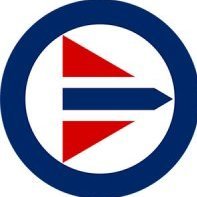
1/72 F-86 kit with F-40 long wing? (for Norwegian Sabre)
opus999 posted a topic in Aircraft Cold War
I have the Cutting Edge decal set CED72025 ("F-86Fs & Sabres #3 Foreign aircraft"), with the plan of making the Norwegian F-86F of 338 sqn "MU-T" (s/n 25219). The short question is: is there a 1/72 kit with recessed panel lines that has the F-40 extended wing (besides the HobbyBoss F-86F-40)? I bought the HobbyBoss F-86F-40 because it was the only modern kit i could find that had the F-40 wing with the 1 foot wing extensions. When it arrived it appeared to have too narrow chord. I have the old Heller F-86 and the newer Academy F-86F to compare to. The HB wing does indeed have a wider wingspan, but compared to the Heller, which has the narrow chord, slatted early wing, the HB is more swept back, but has a narrower chord at the wing tip. Measuring both wings at the panel line at the wing tip, the Heller measures 25 mm chord and the HB measures 21 mm chord. Measuring the HB at the beginning of the wing extension (the panel line ~1 scale foot inboard from the tip) it is 23 mm chord. So that doesn't seem right to me. I guess a secondary question is: Is the HobbyBoss chord too narrow? (just as confirmation -- hey I might get lucky! ) The final question I have is specific to Norwegian Sabres. The Cutting Edge decal instructions say "F-86F-40 wing fitted" for the Norwegian Sabre. However, I see MU-T (beautifully) modeled at IPMS Norway with a 6-3 hard wing with fences. There's no detailed information there, so I don't know if it is because MU-T had a 6-3 hard wing at some point in its life or if that's the only kit the modeller could find. A decal review at Hyperscale states: So my final question for any Norsk Sabre experts out there is: Could MU-T have had a 6-3 wing in its life? (and I guess I should also ask: is there a modern 1/72 kit with a 6-3 wing? The Airfix had/has one, but its hard to find them right now). That's a lot of questions! I've been researching this info off and on for a few months and I just can't quite get all the info, so any help would be appreciated! -
This is a placeholder, as I might not be able to start this for some time. The original catalogue number was 277. This could easily qualify as a "kit you never built as a kid", and so on. I am building the Heller-Humbrol boxing, which includes the Norwegian markings that were dropped from later Heller releases: There's a school of thought that says this is really a Canadair-specific version, and as such the USAF subject (John Glenn) is not kosher. At any rate, I plan on building the JG 71 aircraft.
-
Very Colourful Sabres (ED-32101) 1:32 Euro Decals by Fantasy Printshop Ltd. The North American F-86 Sabre rose to fame as the main American Fighter in the Korean War, and continued its service into the Cold War. As well as being used by the UASF many were supplied to Various US Allies. Sabres were also licenced built many by Canadair and some by Mitsubishi. Here Fantasy Printshop have upscaled their Colourful Sabres sheet to 1/32 The Options available on this sheet are; F-86A 91021 - Montana Air National Guard. This aircraft with an overall bright yellow fuselage was used as a target tug, hence the highly conspicuous finish. Canadair Sabre 5 23285 Royal Canadian Air Force. Overall Red Aircraft seen at the Toronto Air Show 1955. F-86-40 72-7754 - No.1 Sqn Japanese Ari Self Defence Forces. This aircraft is overall Silver Lacquer not NMF as the instructions say, with a red exercise fuselage band. F-86F 31169 AH-Z - Royal Norwegian Air Force Jokers Aerobatic Display Team 1970s F-86E 12724 - USA At Edwards Air Force Base. Aircraft #4 which took part in breaking the closed circuit world speed record in 1951. Day-Glo orange nose. RF-86F 24522 - Republic Of Korea Air Force, 1970s, Standard SEA Camo. The decals arrive on 1 main A4 sheet and a second A5 sheet, the quality is first rate with sharpness and colour density both good. Now not all of the options on the sheet are actually kitted in 1.32, or even available as a conversion; so for those you will have to do your own work. Most can be used though and its a welcome addition to the 1.32 scale. Recommended. Review sample courtesy of
-
F-86K's at The Norwegian Armed Forces Aircraft Collection (though it now seems the one outside has been moved), pics thanks to Mikemx.
- 1 reply
-
- 2
-

-

-
- North American
- F-86
-
(and 1 more)
Tagged with:
-
I started this 1/48th Academy F-86F Sabre in February and after some long time gaps have completed her 🙂 20200805_184347 by Ghostbase, on Flickr The kit is the c. 2000 Academy F-86F "Mig Killer", I was quite impressed with the kit for the detail and how easily it went together, it proved to be an enjoyable build and I am reasonably pleased with the finished model. 20200805_184408 by Ghostbase, on Flickr She was painted using a spray can, I think it was Humbrol 11 silver, and all other colours were brushed using Vallejo acrylics. In reality she is much shinier than in my photos. 20200805_184426 by Ghostbase, on Flickr So why "vanilla"? She was supposed to be finished as F-86F 51-12958 "The Paper Tiger" flown by Capt. Harold E. Fischer in Korea in 1953. The problem was the kit decals and specifically the yellow bands on the wing and the fuselage. As much as I drowned them in Decalfix they refused to settle, Inevitably I got frustrated and ham-fisted and they ended up in the bin. I checked my references and found that the F-86F was operated in Europe with buzz codes as well as U.S. Air Force titles on the forward fuselage so I decided to go for a just-out-of-depot look and add a couple of U.S. Air Force decals from the spares box. 20200805_184309 by Ghostbase, on Flickr My next 1/48 Sabre will be the new Airfix kit when it is released. Michael
-
Hi, Please find my latest completion, the f-86K in Netherlands air force markings by MustHave models. I found this a very nice kit to build. It is basically the revell f-86D, but with 2 injection moulded fuselage halves in order to make a "K". Some photo etch and resin is supplied in the kit as well, but not too useful apart from the seat belts. As usual there were some challenges along the way, but all of my own making. The only item that I couldn't get to fit perfectly was the canopy, so I decided to place it in the open position. (Although I did make some pics with a shut canopy before I permanently attached it in the open position) It is not 100% accurate, but overall I am reasonably happy with the result. The good thing is that I am finally a little more comfortable with the All metal finishes after having build this and the recent Thunderflash. Metal colors all by AK xtreme and some touch ups with metalizing powders UvdR and Mig. Hope you like it. The build thread below: That's all. Thanks for watching. Any feedback or critique is welcome.
- 14 replies
-
- 36
-

-

-
At some point I'm planning on building my Airfix Sabre F.4, but I must say I'm rather underwhelmed by the decals. Apart from the shark mouth, they're a little boring in my opinion and an odd choice given that in the 50s there were a few Sabre squadrons with lovely garish unit markings! Fortunately, when I bought the kit from eBay, it very nicely included an Xtradecal set with markings for a few different Sabres (though frustratingly no serials!!) I'm thinking of doing a 92 sqn one, with a preference for an XB... serial and silver undersides. I was wondering if anyone may be able to help with the following questions: Did XB772 (or XB727) ever fly with 92 sqn? Were any XB serialled Sabres silver underneath, or all that awful (imo) 'PRU blue'?
-
Started as part of last year's 50s NATO v Warsaw Pact in Europe GB and completed as far as it will get, this is the 1979 vintage ESCI 1/48th scale North American F-86F Sabre operated by the Spanish Ejercito Del Aire from 1955 onwards, built OOB using the original kit decals. I have added "illusion" to the title because all is not what it seems with this kit, ESCI marketed the kit as an F-86E but supplied decals for the F-86F, the kit itself is most likely a Canadair Mk.5 or 6 with a 6-3 wing with leading edge slat and no outward wing extension. I rapidly learned much about the various Sabre wings! On to the photos... 20200123_195255 (2) by Ghostbase, on Flickr 20200123_195532 (2) by Ghostbase, on Flickr 20200123_195215 (2) by Ghostbase, on Flickr 20200123_195617 (2) by Ghostbase, on Flickr 20200123_195820 (2) by Ghostbase, on Flickr This 40 year old kit goes together well with engraved panel lines. The kit decals went on very easily indeed. I painted her with Halfords Aluminium from a rattle can and sealed her with a coat of Humbrol acrylic matt varnish to give that dull aluminium effect. I made a complete mess of the wing tanks so they have been left off for now. The wing walk decals are inaccurate, that is my fault as I managed to destroy the originals! Oh, and the canopy isn't sitting right so needs attention tomorrow. On the plus side this is my first 1/48th Sabre and I love the lines of this pugnacious looking swept wing fighter, I would like to make a few more this year and look forward to the Airfix offering later this year. Here's hoping 👍 Michael
-
Hi Guys! here is my 1/48 Musthave F-86K. The K was derivative of the D Sabre Dog and was fitted with cannons in stead of the rocket pack fitted on D models. This meant the centre of gravity changed and thus the fuselage was lengthened. Musthave has taken the standard RevellOgram F-86D kit and supplemented it with a new injection K fuselage which fits perfectly!. My model depicts machine from 702 squadron Royal Netherlands airforce in 1959. I've painted it with AK extreme metal colours. Erik
- 25 replies
-
- 71
-

-

-
I finished this a couple of weeks ago. First thing - a big shoutout of thanks to theplasticsurgeon who very kindly sent me a replacement set of Airfix decals This was languishing on a shelf waiting to be finished. It just lacked the decals. Despite two (or more coats) of Liquid Decal Film my original Airfix decals just splintered into pieces.
- 15 replies
-
- 34
-

-
Hi all, Finally, I have the next one wheeled out of the paint shop. I had some delay because the white star decals I needed went out-of-stock. She is an F-86F-30 with the -40 wing, as supplied to Venezuela from US stocks in the late 1950s. You will have seen an earlier iteration of this machine when I built her around five years. I chose to build her again as I like the markings. These markings are of the earlier type, i.e. without the “wings” on the roundels. These gradually changed from 1958 following the January 1958 attempted Military coup. She is “8C36” in the older serial system, indicating the 8th aircraft of “C” Flight and is seen here (below) while awaiting delivery from McClellan AFB. The aircraft, like all the FAV Sabres, was assigned to Escuadron de Caza No. 36, Fuerza Aerea Venezolana, known as “Los Diablos”. The Venezuelans ordered 22 Sabres from the US in 1955. Some eventually went on to Bolivia to be the last operational Sabres anywhere in the world. The kit is the Fujimi which, in my view, is the best F-86F available in the scale despite being long in the tooth now. It has some drawbacks, not least of which is the fact that the wing doesn’t have the separate Leading Edge flaps. As you can see, I cut these and built my own. I’ve chosen to load her up with tanks too, appropriately, as shown in the image below. Apart from the seat, the inner tanks and the decals there are no another aftermarket extras on her. So, what did I do/use?. Well: 1. Kit – Fujimi F-86F-40 1/72. I removed the starboard inlet behind the wing which was a feature of the -40, rather than the -30. 2. Aftermarket – Pavla seat, Red Roo tanks 3. Decals – Aztec Juicy Jugs set for the roundels, Detail Decals (US-109) 1mm white stars, home-printed the serials etc, and the rest were from the kit. 4. Paints – overall Humbrol Metalcote Polished Aluminium (27002), with some 27003 Steel added to vary panels. Others paints used were: Humbrol Insignia Yellow, Insignia Red, Matt Black, Aircraft Grey (140), Light Grey (147), Colourcoats Insignia Blue. Finished with Humbrol Satincote. 5. Washes and Weathering – a mixture of Humbrol Dark Grey wash, Flory Dark Dirt, Tamiya Weathering powders. Prismacolor silver pencil for scratches etc around the canopy. Here she is. A few mistakes along the way but I hope you like her: Martin
- 38 replies
-
- 65
-

-
Hello! It's my next model. Bu putty, super glue and sandpaper was in my hands. Some details didn’t fit well As addition I used resin wheels Reskit, Eduards photoetching set. Painting-Hataka Weathering -oil dots, washes and salt dots. Scratches and chipped- silver pencil.
- 16 replies
-
- 37
-

-
Some Sabres of Tracor Flight Systems at Mojave Airport CA in the early 1980s. Sabre Mk.6 N80FS, S6-1675, ex Luftwaffe 0113, September 1981. Sabre Mk.6 N81FS, S6-1593, August 1981 Sabre Mk.5 N86FS, S5-1157, ex-RCAF 23367, July 1984 Sabre Mk.6 N89FS, S6-1710, August 1981 Sabre Mk.5 N5592K, S5-0997, ex-RCAF 23207, October 1982 Sabre Mk.5 N5591, S5-0911, ex RCAF 23202, October 1982 Thanks for looking, Sven
- 14 replies
-
- 16
-

-

-
- Sabre
- Flight Test
-
(and 1 more)
Tagged with:
-
Having completed a Special hobby F-86H last year, and a hybrid CAC Avon Sabre last week (see below), this in theory gives me more time to work on the 1/72 Sedbergh glider ..................... however I'm already suffering Sabre withdrawal, so need to get another underway. RFI's for both can be found on here. I am a little spoilt for choice on the matter of which Sabre to build next: In the end the chosen one is this, mainly because I actually have two of this one! I am undecided on exactly which scheme to do at the moment, but any suggestions welcome! Progress so far is limited to some work in the cockpit to get some weight in a stable place and also make some improvements to the seat. Also, some weeks back I recall @Lord Riot was given some advice on wing fence position so I have started to work on repositioning these more appropriately. The plan is to insert a fin sliver of plastic card and shape accordingly. I used this approach on the Avon Sabre and it worked OK. You can probably just make out where the original fences were positioned, outboard of where I have made my cuts. More to come soon. Terry
- 288 replies
-
- 21
-

-
OK, we've got an Airfix Hunter currently on its way to Chez FC courtesy of eBay, however as I'm chomping at the bit to start another build now that my Blenheim WIP is coming to an end, my thoughts have turned to it's immediate predecessor, the Canadair Sabre Mk F.4, which served with the RAF as an interim solution until the Hunter entered service. Let's have a look at what we've got then. Here are the box and sprue shots: ....... and as a teaser was showing in the first photo here's the full package showing most of what we are going to add to Revell's offering (I say most as I have also used my eBay Plane TokensTM - AKA my wages! - to buy a couple of Quickboost resin seats which should arrive in the next couple of days) The Red Roo early slatted wings is a drop in replacement for the kit parts so shouldn't offer up too many difficulties, and are needed as all the three options in the EagleStrike decals sheet have these wings specified rather than the 6-3 wing that was later fitted to the RAF machines (see note below re the 4 Sqn option as it may be that Eagle Strike made a boo boo with that one, but I'm no expert so can't say for 100% either way). Small moan, I bought them from an Australian eBay trader (international Plane Tokens needed for that one) and I got nabbed by the Royal Thieving Mail with their wonderful silver card that informed me that I was to be extorted £8.00 for them to be able to collect the £3.57 of tax/duty on my behalf. I believe a de-minimis limit should apply of at least a 50-50 split between charges and duty before collection is enforced as charging someone the best part of three times what is collected does lead to a fair bit of resentment to our lovely posties. The plan is to make the middle option, a 93 Squadron machine serialled XB829 'D', based at RAFG Jever in 1955 for no other reason than I like the arrow Squadron bars, and that I can find a photo of this airframe that supports it having the slatted wings, unlike the other option I fancied doing, the 4 Sqn one! The RAF Jever website for 4 Sqn says that 4 Sqn only flew the Hard Edged version (in keeping with their reputation) and there is a photo of XB931 in a slightly different marking scheme that appears to have the 6-3 wing as evidenced by the wing fence. I quite like the way they referred to other units using the biplane version when referring to their slatted-wing airframes. Perhaps I will build one of my Academy or Italeri 6-3 Sabres as this one. Having previously built the Hasegawa RAF Sabre boxing I can confirm that all the sprues bar the wings are the same as that boxing. The Revell boxing has the longer span 6-3 slatted wings which is no good for our chosen airframe, or any other RAF scheme as far as I know. The Hasegawa boxing had the unslatted 6-3 wing suited to the modified RAF machines. Onto the build. Well since opening the box I have had the Rocky Horror's "Let's do the Time Warp" ear-worming its merry way across my consciousness, as the metallic silver styrene is like a step back in time to the 70's as it looks just like the Airfix plastic of that era that I cut my modelling teeth on. Luckilly under a coat of Halford's primer it looks OK, I've checked that as a matter of utmost importance! First step was to glue the airbrakes in the closed position. One side fitted perfectly and the other, shall we just say, didn't. As I'm doing a camouflaged rather than natural metal finish I think we'll get away with only a bit of remedial action and still look OK. Found a couple of small sub assemblies to be going on with, i.e. the fuel tanks and main wheels, and although unphotographed I gave all the cockpit and engine parts a coat of Halford's finest. I mentioned the earlier Hasegawa RAF build. That has been sitting on my Shelf of Doom for quite a few years now as the "Muck Up Fairies" managed to pull off sizeable chunks of the decals when removing some Tamiya Masking Tape whilst doing some touch ups, so if anyone has a spare set of decals from this kit (even just the 112 Sqn sharkmouth scheme decals) I would happilly relieve your spares box of their burden in return for the odd beer token or two. I will put a proper request for this in the Wanted section at some point in the build now that my memory has been jogged. OK so until the next one.... Chris
- 58 replies
-
- 12
-


.thumb.jpg.cfc129272ffec824439b15e6013d5952.jpg)
